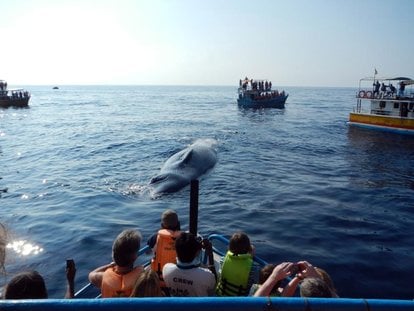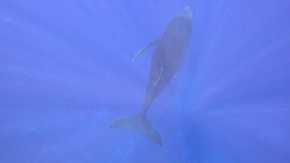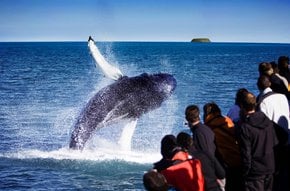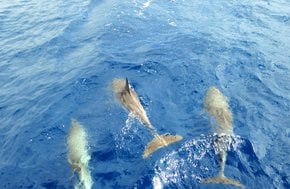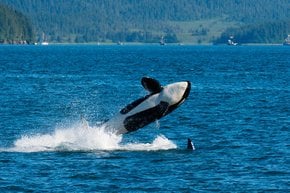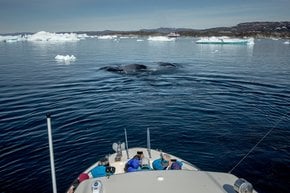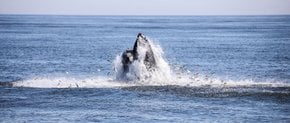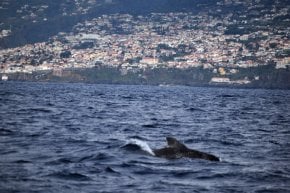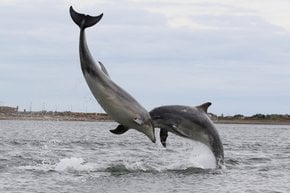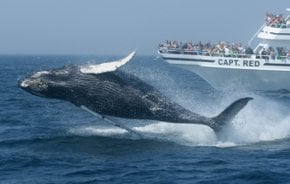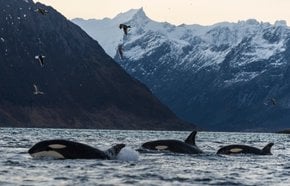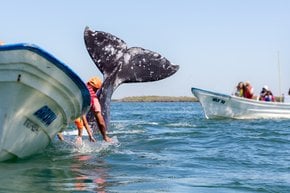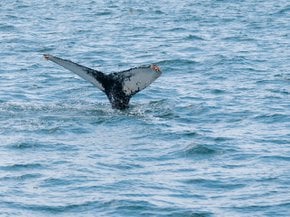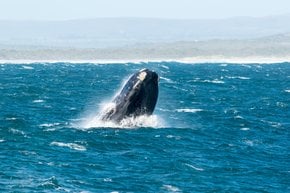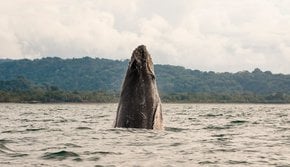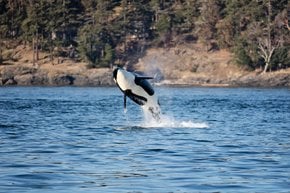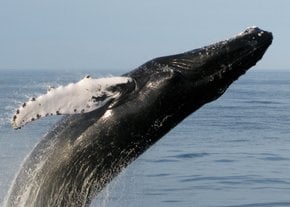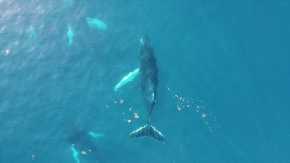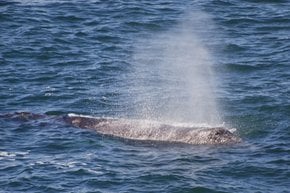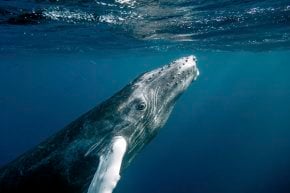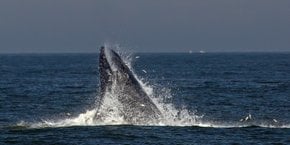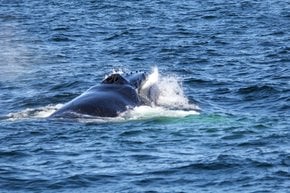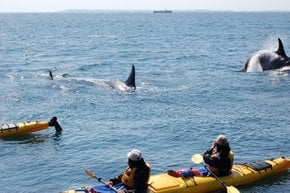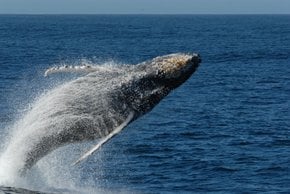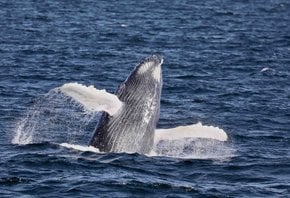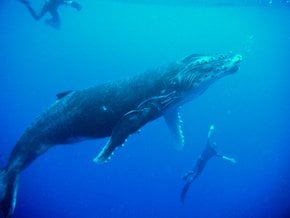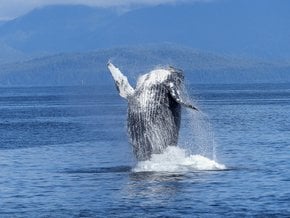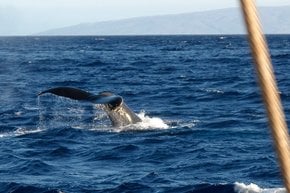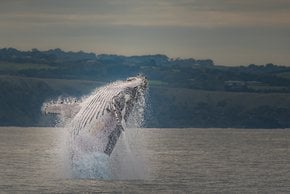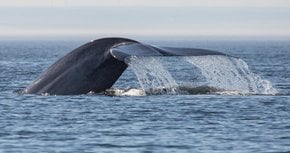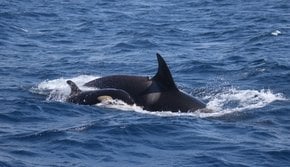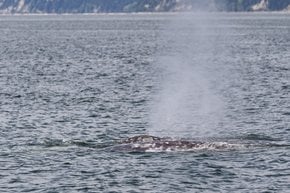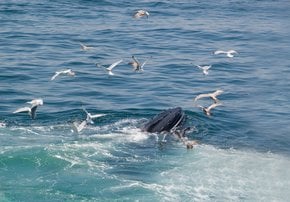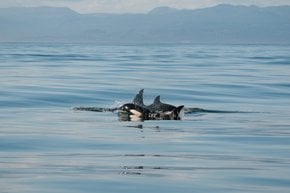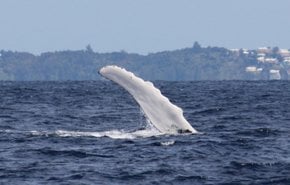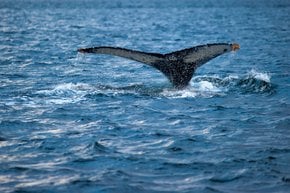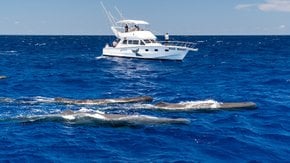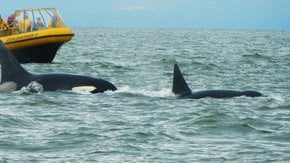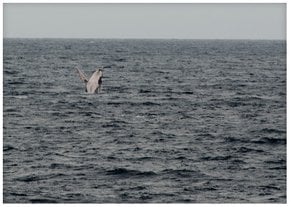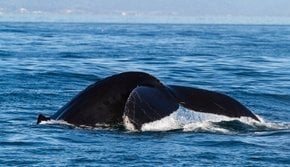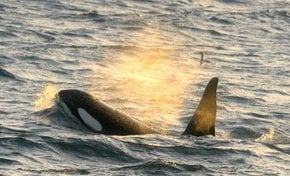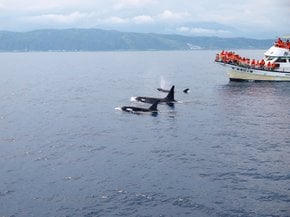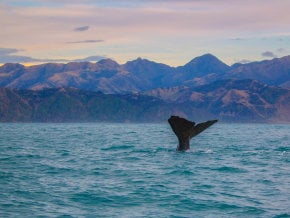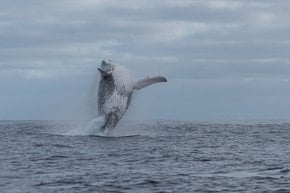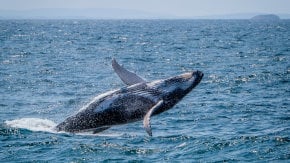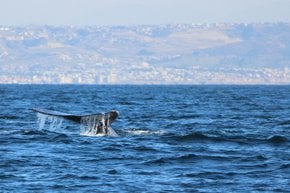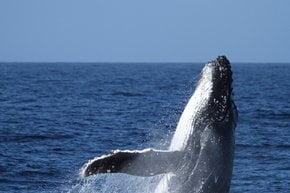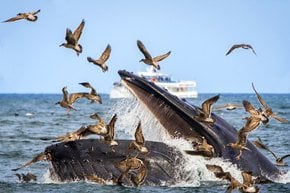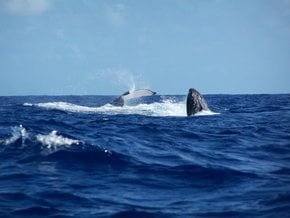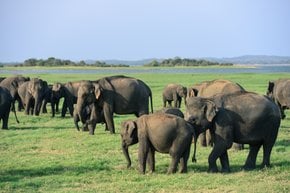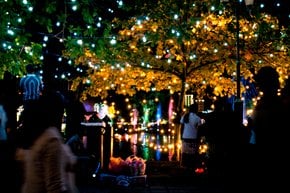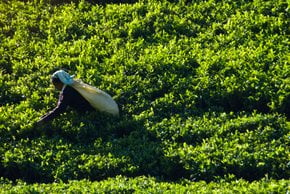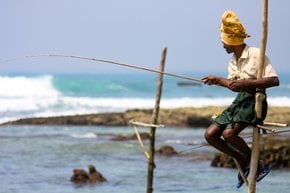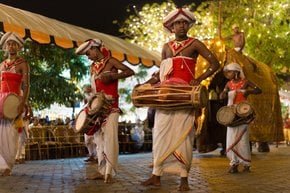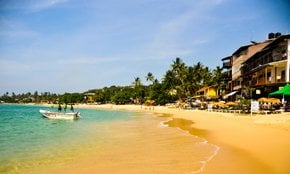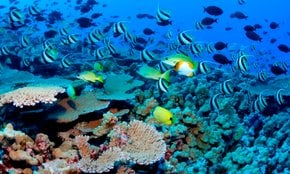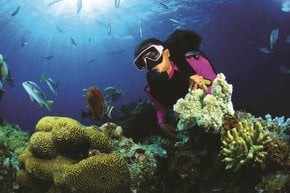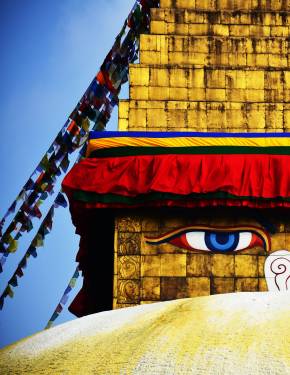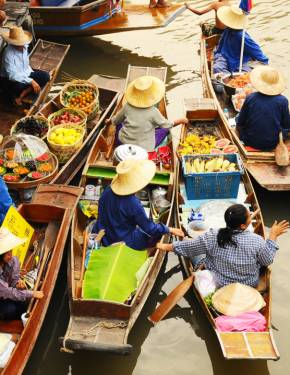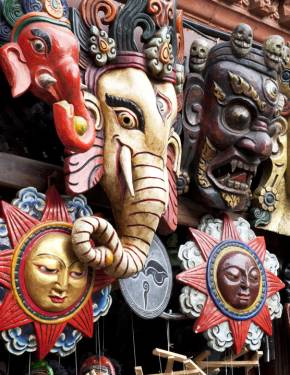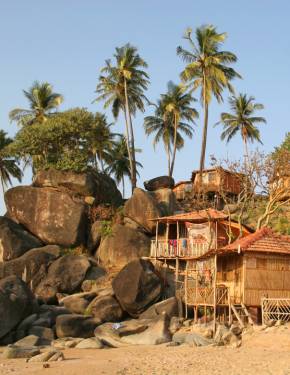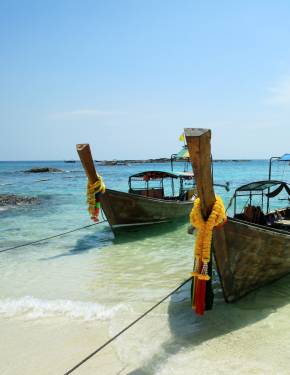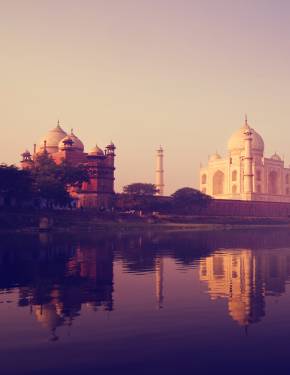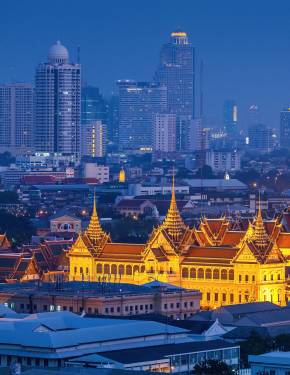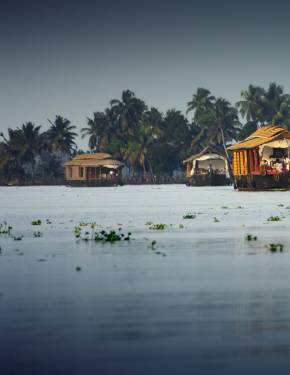Avistamiento de ballenas en Sri Lanka 2025-2026
Sri Lanka está afortunadamente situado en un punto de vista para observar ballenas
Mejor época: Noviembre a abril | Julio a septiembre
Se pueden observar más de 26 especies de cetáceos como ballenas azules, cachalotes y ballenas aletas desde la costa de Sri Lanka. Las ballenas azules son los huéspedes más frecuentes en las aguas de Sri Lanka. Los lugares populares de observación de ballenas incluyen Dendra Point, Mirissa y Trincomalee
Dendra Point es la punta más meridional de Sri Lanka. Debido a la estrecha plataforma continental, las ballenas se pueden ver tan cerca como a pocos kilómetros de la orilla. A veces se pueden ver 54 m (176 pies) desde el faro de Dendra. Dendra Point es el lugar más confiable para la observación de ballenas debido a un 90% de probabilidades de ver ballenas azules y una infraestructura bien desarrollada. Excursiones a Dendra Point salen de Galle e Hikkaduwa.
Blue whales are the largest creatures to have ever lived on Earth. They primarily feed on krill, filtering massive amounts of ocean water through their baleen plates, which act like a sieve. Some of the largest blue whales can consume up to 6 tons of krill daily. Their blue-gray, mottled skin takes on a light blue hue underwater, giving them their name. While blue whales are sometimes seen in small groups, they are typically solitary or found in pairs.
Mirissa ofrece excursiones regulares de observación de ballenas y delfines. Los barcos salen a las 7 am desde el puerto de Mirissa y pasan tres o cuatro horas en el mar. Las probabilidades de ver ballenas y delfines durante la temporada alta es de más del 90%. El mejor momento para observar ballenas en la costa sur es de noviembre a abril.
Una opción alternativa es observar ballenas en Trincomalee, situado en la costa noreste. La mayoría de los tours de observación de ballenas allí comienzan a las 6:30 a.m. Dependiendo de las condiciones del mar, puede tomar hasta 3 horas. En el norte, el mejor momento para observar ballenas es generalmente de julio a septiembre
Due to the narrow continental shelf, whales can be seen as close as a few miles from the shore here. Sometimes, they can be seen 54-m (176 ft) from the Dondra Lighthouse. Dondra Point is the most reliable place for whale watching due to a ninety percent chance of seeing blue whales and a well-developed infrastructure. Tours to Dondra Point leave from Galle and Hikkaduwa.
Mirissa is another great place for whale and dolphin-watching tours in Sri Lanka. It is a fishing village located on the southern coast between Matara and Galle. Known for its stunning scenery, unspoiled beaches, and delicious cuisine, it’s one of the most accessible spots for viewing majestic whales and pods of dolphins. The town is easily reachable from Colombo and other major cities, making it a popular destination for wildlife enthusiasts.
Mirissa offers regular whale-watching excursions. Boats leave at 7 am from Mirissa Harbor and spend three or four hours at sea. The chances of seeing whales and dolphins during high season are over 90%. The best time for whale watching on the southern coast is from November to April.
An alternative option is to watch whales in Trincomalee, located on the northeast coast. Home to one of the world’s finest natural harbors, the town is celebrated as the most picturesque coastal areas on the island. Most of the whale-watching tours there start at 6:30 am. Depending on the sea conditions, it can take up to 3 hours. From May to August, blue whales remain as close as 6-8 nautical miles (about 30 min by boat) east of Trincomalee.
Trincomalee, situated approximately 2 hours from Pasikudah, is renowned for its whale-watching opportunities, with Nilaveli and Uppuveli beaches being the most frequented spots.
This pristine, untouched beach on Sri Lanka’s west coast, just north of Colombo, is ideal for spotting both whales and dolphins. Kalpitiya is renowned for its impressive pods of dolphins and sightings of sperm whales. Watching hundreds of dolphins swim alongside your boat, diving under the waves, jumping, spinning, and leaping out of the water, creates a breathtaking experience you won’t soon forget. The prime season for dolphin and whale watching in Kalpitiya runs from November to March, offering unforgettable marine wildlife encounters.

